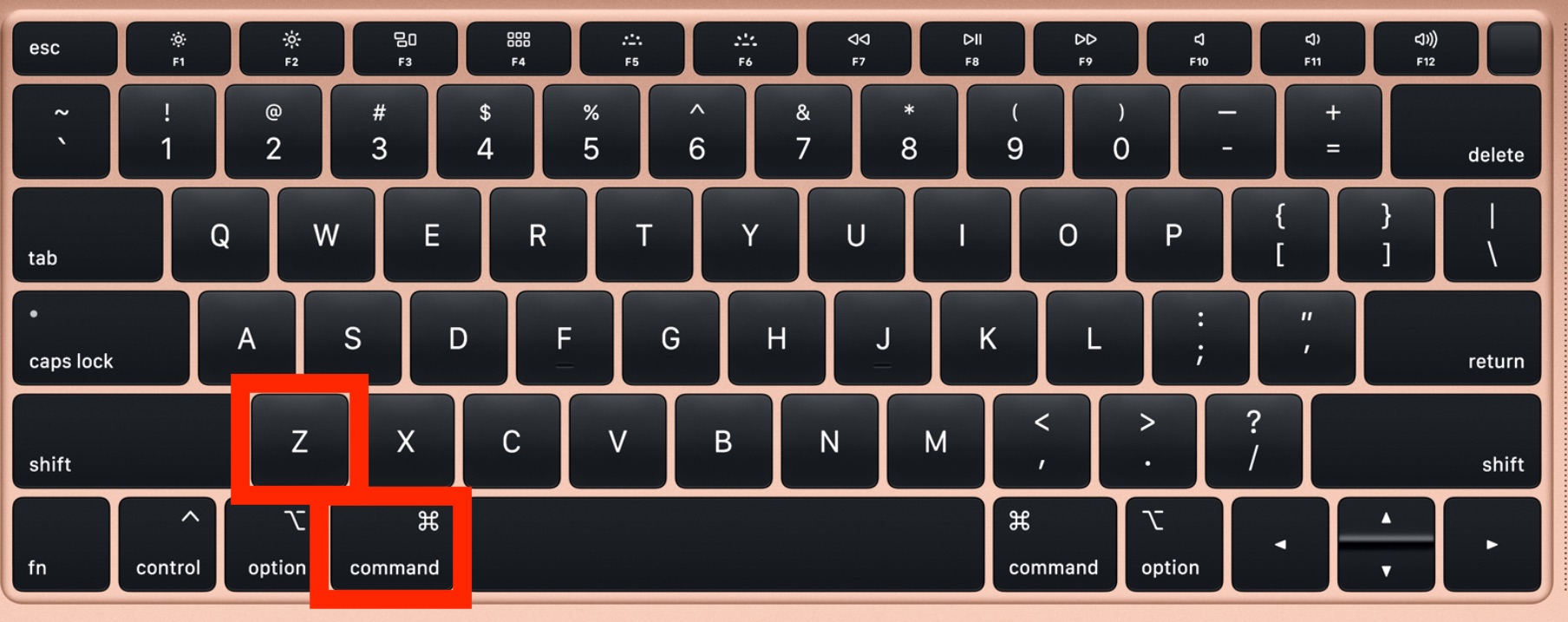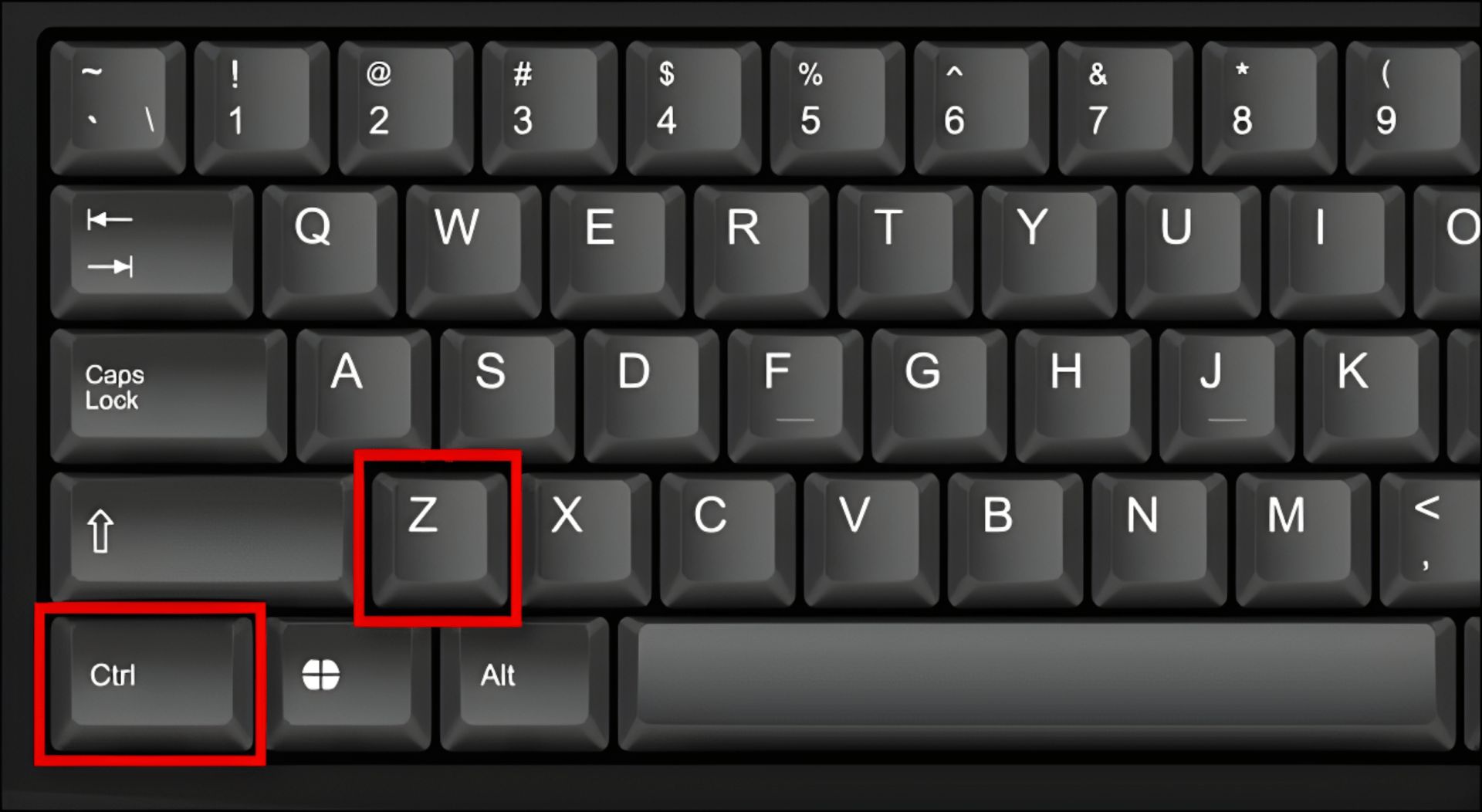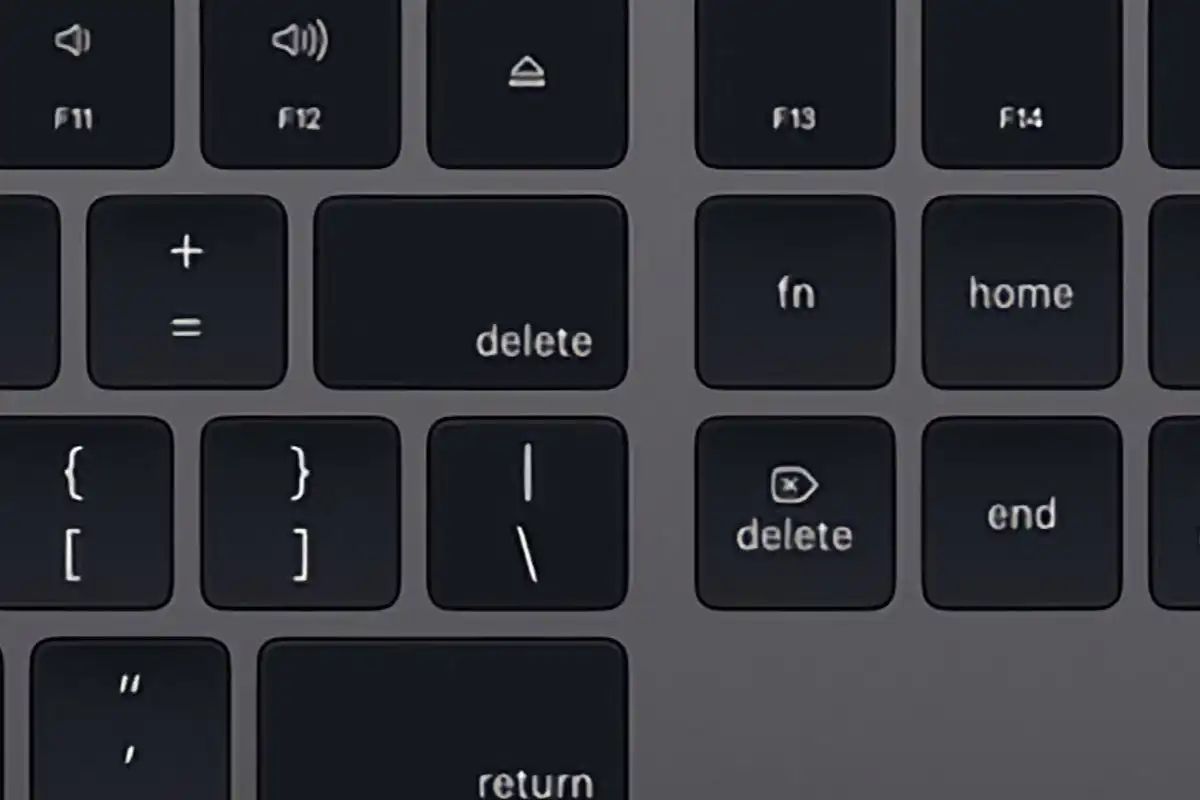Introduction
When working on a Mac computer, it’s not uncommon to make mistakes or perform actions that you wish to undo. Fortunately, with the use of keyboard shortcuts and the intuitive interface of macOS, undoing actions is often a straightforward process. Whether you need to undo a text change, revert a file operation, or restore a deleted file, there are various methods available to help you out.
In this article, we will explore the different ways to undo actions on a Mac. We’ll cover keyboard shortcuts, specific techniques for undoing actions in various applications, and even how to restore accidentally deleted files. So, whether you’re a casual user or a power user, you’ll find these tips and tricks invaluable in your daily Mac usage.
Before we dive into the specifics, it’s worth noting that the exact steps for undoing actions may vary slightly depending on the Mac version you are using and the application you are working in. However, the concepts and keyboard shortcuts explained here should be applicable to most Mac computers and popular applications.
With that said, let’s get started and learn how to efficiently undo actions on a Mac!
Using Keyboard Shortcuts to Undo on Mac
Undoing actions on a Mac can often be done swiftly with the help of keyboard shortcuts. These shortcuts are designed to provide a quick and efficient way to revert changes without having to navigate through menus or search for specific options. Here are some commonly used keyboard shortcuts for undoing actions on a Mac:
- Command + Z: The most common keyboard shortcut for undoing actions on a Mac is Command + Z. This shortcut works in a variety of applications and can often be used to undo a single action or a series of recent actions. Keep in mind that not all actions can be undone, but for many text-based changes and basic file operations, Command + Z is your go-to shortcut.
- Command + Option + Z: This keyboard shortcut is an extension of Command + Z and allows you to redo an action that you previously undid. If you accidentally undo an action or change your mind, simply use Command + Option + Z to bring it back.
- Command + Shift + Z: Occasionally, applications will use Command + Shift + Z as the shortcut for redo instead of Command + Option + Z. If you find that Command + Option + Z doesn’t work for redoing, give Command + Shift + Z a try.
It’s important to note that the availability of these keyboard shortcuts and their functionality may vary slightly depending on the application you are using. Some applications may have their specific shortcuts or might not support certain undo features. To ensure you have the correct shortcuts for the application you are working in, refer to the application’s menu or documentation.
The use of keyboard shortcuts can greatly speed up your workflow and make undoing actions a breeze. Whether you’re editing text, making changes to files, or navigating through different applications, mastering these keyboard shortcuts will save you time and effort in the long run.
Undoing Text Changes
Text editing is one of the most common tasks we perform on our Macs, whether it’s writing emails, creating documents, or even composing social media posts. Fortunately, undoing text changes is a straightforward process. Here are some methods to undo text changes on a Mac:
- Keyboard Shortcut: As mentioned earlier, the Command + Z keyboard shortcut is your savior when it comes to undoing text changes. Whether you’ve accidentally deleted a paragraph, formatted text incorrectly, or made any other unwanted modifications, simply press Command + Z to revert to the previous state. You can repeat this shortcut to undo multiple changes.
- Edit Menu: Most Mac applications have an Edit menu where you can find the Undo option. Simply click on the Edit menu and select Undo, or use the keyboard shortcut mentioned alongside the option. This is particularly useful when you prefer using the mouse or trackpad for undo operations.
- Shake to Undo: If you’re working on a MacBook with a built-in trackpad, you can take advantage of the Shake to Undo feature. Simply shake your device gently, and it will trigger an undo action. This method is a quick and convenient way to undo text changes, especially when you’re working on the go or prefer a hands-on approach.
Regardless of the method you choose, it’s important to remember that the ability to undo text changes is typically limited to the current editing session. Once you close the document or application, the undo history is usually not retained. Therefore, it’s good practice to save your work frequently, especially if you anticipate making significant changes or experimenting with different text editing techniques.
Now you know how to quickly undo text changes on your Mac. So whether it’s a sentence you regret deleting or a formatting error you need to fix, you can easily undo those text modifications and keep your documents looking pristine.
Undoing File Operations
Performing file operations, such as moving, deleting, or renaming files, is something we do quite frequently on our Macs. However, there are times when we make mistakes or change our minds about these actions. Fortunately, macOS provides several ways to undo file operations. Here’s how:
- Move to Trash: If you accidentally delete a file or folder, the first step is to check your Trash. By default, macOS moves deleted items to the Trash, which serves as a temporary storage location before permanent deletion. Simply open the Trash, locate the file you want to restore, right-click on it, and select “Put Back” to reverse the deletion and restore the file to its original location.
- Keyboard Shortcut: The Command + Z keyboard shortcut, as mentioned earlier, can also be used to undo file operations. This comes in handy when you move or copy files to a different location and want to revert the action. Simply select the moved or copied files, and press Command + Z to bring them back to their original location. Keep in mind that this keyboard shortcut may not work for every file operation, especially if the action is irreversible.
- Finder Undo: The Finder, the file management application on macOS, has an Undo option in the Edit menu. If you perform an action and realize you want to undo it, you can click on the Edit menu and select Undo. Alternatively, you can use the keyboard shortcut mentioned alongside the Undo option.
It’s worth noting that the ability to undo file operations may depend on the specific actions and settings. For example, if you use third-party file management tools or perform file operations in applications other than Finder, the availability of undo options may vary. Additionally, once you empty the Trash or permanently delete files, the ability to undo those operations is no longer possible without resorting to data recovery methods.
By utilizing these methods, you can easily undo file operations and restore files to their original locations. Whether you’ve accidentally deleted a crucial document or moved a file to the wrong folder, knowing how to undo these actions gives you peace of mind and helps you maintain an organized file system.
Undoing Actions on Mac Applications
In addition to text changes and file operations, various applications on your Mac offer their own specific ways to undo actions. Let’s explore how you can undo actions in some commonly used Mac applications:
- Photoshop: In Adobe Photoshop, you can use the keyboard shortcut Command + Z to undo the most recent action. To go back multiple steps, use Command + Option + Z. Alternatively, you can access the Undo History panel by going to Window > History, where you can select and revert to a specific state in your editing process.
- Microsoft Word: In Microsoft Word, the keyboard shortcut Command + Z is your go-to for undoing actions. This can be used to reverse text changes, formatting modifications, or even deletions. If you need to go back multiple steps or view your undo history, click on the Undo button in the toolbar or press Command + Z repeatedly.
- Excel: Undoing actions in Microsoft Excel can be done by using the keyboard shortcut Command + Z. This allows you to reverse cell value changes, formatting updates, or other modifications. To undo multiple steps or access the undo history, click the Undo button in the toolbar or press Command + Z repeatedly.
- Keynote: In Apple’s Keynote presentation software, the keyboard shortcut Command + Z performs the undo action, allowing you to revert changes made to slides, formatting, or other elements. To undo multiple steps or access the undo history, click on the Undo button in the toolbar or press Command + Z repeatedly.
- Final Cut Pro: In Final Cut Pro, a popular video editing application, you can use the keyboard shortcut Command + Z to undo actions, such as deleting clips, modifying effects, or rearranging the timeline. The Undo button in the toolbar can also be clicked to undo the most recent action.
These examples demonstrate that different applications may have their own unique approaches to undoing actions. It’s essential to familiarize yourself with the specific keyboard shortcuts and undo options available within each application you use. By understanding these features, you can confidently reverse actions and efficiently navigate through your work in various Mac applications.
Restoring Deleted Files on Mac
Accidentally deleting files is a common mishap that can cause panic and frustration. However, on a Mac, you typically have options to restore deleted files and recover them from the Trash or use built-in recovery features. Here’s how you can restore deleted files on a Mac:
- Trash: When you delete a file on your Mac, it is usually moved to the Trash instead of permanent deletion. To restore a deleted file, open the Trash by clicking on its icon in the Dock. Once the Trash window opens, locate the file, right-click on it, and select “Put Back” to restore the file to its original location. Alternatively, you can drag the file out of the Trash and drop it onto the desktop or another folder to restore it.
- Time Machine: If you have set up Time Machine, Apple’s built-in backup solution, you can recover deleted files from a previous backup. Connect your Time Machine backup disk or navigate to the Time Machine interface, locate the file you want to restore, and use the Restore feature to bring it back to your current system. This is particularly useful for retrieving files that were deleted a while ago or if the Trash has been emptied.
- Third-Party Data Recovery Software: In cases where you have emptied the Trash or do not have a recent backup, you may need to rely on third-party data recovery software. These software solutions can scan your Mac’s storage and attempt to recover deleted files. Some popular options include Disk Drill, Data Rescue, and EaseUS Data Recovery Wizard. Follow the instructions provided by the software to perform a scan and recover your files.
It’s important to remember that the chances of successful file recovery may vary depending on factors like the time elapsed since deletion, the activity on your Mac’s storage, and any subsequent changes made to the storage. Therefore, it’s crucial to act promptly and avoid writing more data to the disk where the deleted file was stored to maximize the chances of successful recovery.
By utilizing the built-in features of macOS and third-party data recovery software, you can often restore deleted files on your Mac and regain access to important documents, photos, videos, and more. Make sure to establish regular backups to prevent permanent data loss and be cautious when deleting files to avoid accidental deletions in the first place.
Undoing Actions on Safari
Safari, Apple’s default web browser, offers several ways to undo actions and reverse changes during your browsing sessions. Whether you accidentally closed a tab, cleared your browsing history, or made a mistake while editing a form, Safari provides options to help you undo these actions. Here’s how:
- Keyboard Shortcut: As with many other applications, the Command + Z keyboard shortcut is a handy way to undo actions in Safari. It works for a variety of actions, such as reopening a closed tab or undoing a text change in a form field. Just press Command + Z to reverse the most recent action, or repeatedly press it to go back multiple steps.
- Contextual Menu: Right-clicking (or Control + clicking) on a blank area of the Safari window opens a contextual menu. Within this menu, you can find options like “Undo Close Tab,” which allows you to reopen a recently closed tab. This method is convenient for quickly reversing the closure of a tab without relying on keyboard shortcuts.
- History: Safari maintains a browsing history that allows you to review and revisit previously visited pages. If you need to undo an action that closed a tab or navigated to a different page, you can open the History menu and select the desired page to restore it. Pressing Command + Y also opens the History view, showcasing your browsing history to aid in undoing actions.
These methods provide you with quick and straightforward ways to undo actions while browsing in Safari. As you become more familiar with these options, you can confidently navigate through your browsing sessions, knowing that you have the means to reverse any undesired changes or actions.
Undoing Actions on Mail
Apple Mail is a popular email client on macOS that allows you to manage your email accounts efficiently. Whether it’s a mistaken deletion, an accidental move to the wrong folder, or an unintended email action, Apple Mail provides options to help you undo these actions. Here’s how to undo actions in Apple Mail:
- Keyboard Shortcut: The Command + Z keyboard shortcut is a valuable tool for undoing actions in Apple Mail. If you accidentally delete an email, move it to the wrong folder, or perform any other unwanted action, simply press Command + Z to bring back the email to its previous state. You can use this shortcut repeatedly to undo multiple actions.
- Edit Menu: Apple Mail’s Edit menu offers an Undo option that you can use to reverse actions. If you’re more comfortable using the mouse or trackpad, navigate to the Edit menu and select Undo to revert the most recent action. Clicking on the Undo option repeatedly will undo multiple actions in succession.
- Undo Button: Apple Mail also provides an Undo button in the toolbar, which you can click to undo the most recent action. This button offers a convenient way to quickly reverse actions without relying on keyboard shortcuts or navigating through menus.
These options in Apple Mail make it easy to undo actions and ensure that you can quickly recover from any unintentional or undesired changes. Whether it’s undoing a deleted email, reverting the movement of a message, or undoing other actions in your mailbox, these features provide you with the flexibility to correct mistakes and maintain email organization.
Undoing Actions on Finder
Finder is the file management application on macOS, used to navigate and organize your files and folders. Whether you unintentionally moved a file, deleted something by mistake, or made any other unwanted changes, Finder offers a few methods to undo actions. Here’s how to undo actions in Finder:
- Keyboard Shortcut: The Command + Z keyboard shortcut is a universal way to undo actions in Finder. If you accidentally moved or deleted a file, simply press Command + Z to bring it back to its original location. This keyboard shortcut works for many basic file operations and is the quickest way to revert changes in Finder.
- Edit Menu: The Edit menu in Finder provides an Undo option that you can use to reverse the most recent action. Simply click on the Edit menu and select Undo, or use the keyboard shortcut mentioned next to it. This method is helpful if you prefer using the mouse or trackpad for undo operations or if you need to undo multiple actions in succession.
- Context Menu: Right-clicking (or Control + clicking) on a file or folder in Finder opens a contextual menu. Within this menu, you may find options like “Undo Move,” “Undo Copy,” or “Undo Delete,” depending on the action you performed. Selecting one of these options will undo the corresponding action and restore the item to its original location.
These methods give you the flexibility to quickly undo actions in Finder, ensuring that you can easily correct mistakes and keep your files and folders organized. Making use of these options helps to prevent data loss and provides a safety net when you accidentally perform actions that you want to reverse.
Conclusion
Undoing actions on your Mac is an essential skill that can save you from frustrations and mistakes. Whether you need to revert text changes, undo file operations, or restore deleted files, knowing the available methods and shortcuts can greatly enhance your productivity. By utilizing keyboard shortcuts, accessing edit menus, and utilizing specific features in various applications, you can quickly and efficiently undo actions on your Mac.
Remember to familiarize yourself with the specific shortcuts and features of the applications you frequently use. Each application may have its own unique way of offering undo options, and understanding them will allow you to navigate through your work with ease.
Additionally, it’s crucial to establish regular backups of your important files, either through Time Machine or third-party backup solutions. Backing up your data ensures that even if you cannot undo a particular action, you have a recent copy to restore from.
From undoing text changes in various applications to restoring deleted files on your Mac, the methods and techniques covered in this article provide you with a range of approaches to confidently undo actions and maintain control over your digital workspace.
By mastering these undo methods, you can streamline your workflow, minimize errors, and ensure that your Mac experience is as efficient and seamless as possible.

























